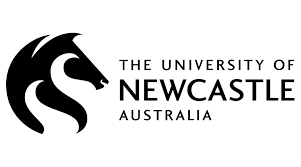University of Newcastle: New mountainfrog species identified in Southeast Queensland
Since 2006, departmental officers and external researchers have been working together to gather and analyse DNA from mountainfrog populations at Mount Barney National Park and Levers Plateau in Northern New South Wales, within the Gondwana Rainforests of Australia World Heritage Area, as it was suspected they belonged to a previously undiscovered species.
To assist with the research, DES staff carried out targeted surveys for this species in the Mount Barney area, collected specimens and genetic samples and recorded the frog’s mating calls.
DES Senior Conservation Office Harry Hines said the species couldn’t be confirmed until genetic evidence was gathered.
“As there were no DNA samples available from Mount Barney and Lever’s Plateau, the taxonomic status of these populations remained unresolved for many years,” Mr Hines said.
“Over the past 16 years we have gathered those samples and determined that these populations are actually genetically distinct, and warrant being regarded as a new species.”
Philoria knowlesi varies in colour and pattern and is confined to upland rainforests and adjoining wet eucalypt forests.
The frog breeds in spring and early summer, in small bogs, seepages and banks of headwater streams.
During mating season, the males create a small breeding chamber in wet areas and tadpoles develop entirely within this chamber.
Key researcher from the University of Newcastle Honorary Professor Michael Mahony said the frog’s only known habitat, the Gondwana Rainforest of Australia World Heritage Area, had one of the most diverse ecosystems in Australia.
“The rainforests of Mt Barney National Park in Queensland and the adjacent Mt Nothofagus National Park in New South Wales have special significance in the evolution of Australia’s biota and this is why they are enshrined as part of the Gondwana Rainforest of Australia World Heritage Area,” Professor Mahony said.
“This new species of frog belongs to a lineage that is found only in rainforest vegetation communities. There are currently seven known species of mountainfrog, six of which are found only in the Gondwana rainforest area.”
Professor Mahony said the new species was named in honour of prominent Australian environmentalist Ross Knowles, from St Ives, Sydney, New South Wales, for his outstanding contributions to the scientific community regarding Australian frog species and conservation.
“The naming recognised Mr Knowles for his early field research that first uncovered the high species diversity among mountainfrogs,” he said.
“And because of his long and tireless support of environmental values and conservation of Australia’s unique biodiversity.”
The Black Summer bushfires of 2019-2020 had an extensive and significant impact on Australian wildlife and crucial habitats, including the Gondwana Rainforests of Australia World Heritage Area and various species of mountainfrogs.
As a result, the Australian Government allocated $200 million to a Bushfire Wildlife and Habitat Recovery Package, prioritising the most fire-impacted threatened species and locations to receive funding for recovery actions.
For the fire impacted areas in southern Queensland, the Australian Government has provided the Queensland Government with $3.85 million for recovery projects, including the Gondwana Rainforests of Australia World Heritage Area and Philoria knowlesi.
Mr Hines said under the Queensland Bushfire Recovery Program, led by DES and supported by the Australian Government’s Bushfire Recovery for Wildlife and their Habitats, it was found that the mountainfrogs had survived the fires and were persisting at sites that had been burnt during the bushfires.
“Not only that, but the increased survey effort resulted in the discovery of additional populations of the new species,” he said.
“Researchers were also able to gather the only systematic data on calling phenology, which will support the design of future surveying and acoustic monitoring of the species.”
Mr Hines said the frog was currently classified as endangered, and DES is now working to protect its habitat as part of ongoing national park management.
“There are a number of measures rangers are taking to support the recovery of fire-impacted areas of Mount Barney National Park and the Gondwana Rainforests, including where these frogs are found in Queensland,” he said.
“This includes improved fencing to keep stray cattle out of their habitat, a feral pig control program, weed control in nearby areas to support habitat regeneration and reducing the risk of future fires through ongoing fire management.”

